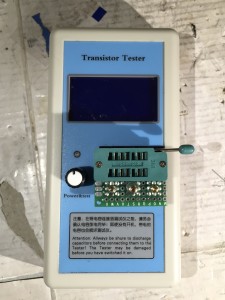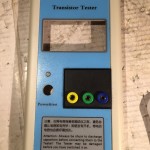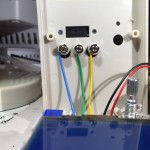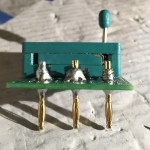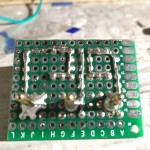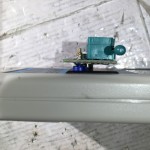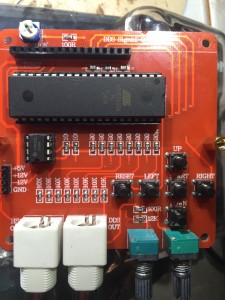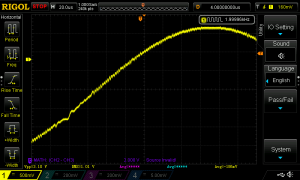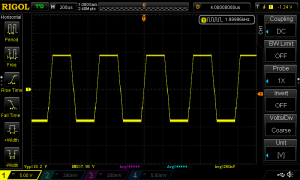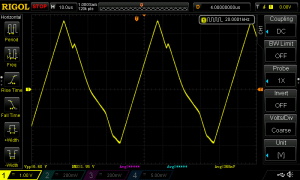I ordered an AVR Transistor/component tester kit from Bangood. At the beginning of the year I bought AVR transistor tester by Fish8840 off of eBay and found it a bit lacking. This kit is better. It uses the 1.12k version of the open source firmware, and includes a rotary encoder for easier access to the advanced features. I also opted for the case.
The kit makes use of through-hole components for easy home assembly. It includes an external 8MHz crystal, a voltage regulator, and uses narrow 1% and 0.1% tolerance resistors in critical positions for highest accuracy.
The case is designed to use a ceramic socket (provided) for connecting components, and also provides two banana jacks to allow test leads for testing larger components. People have complained that the provided socket is hard to use and doesn’t make good contact, and I wanted all three test connections available via leads, so I decided to modify the case.
My modification is inspired by some of the fully assembled versions of the tester I’ve seen on ebay. I cut a piece of plastic and glued it over the existing holes for the socket and banana jacks on the case and drilled three holes for 2mm banana jacks I ordered on eBay. Then, I cut a piece of protoboard and drilled three holes for some 2mm banana plugs, which I screwed into the board. Then I soldered in the ZIF socket and connected up the leads to the plugs.
I haven’t tried building the latest firmware from source for this, but my understanding is that “mega328_st7565_kit” is the proper version to build.
